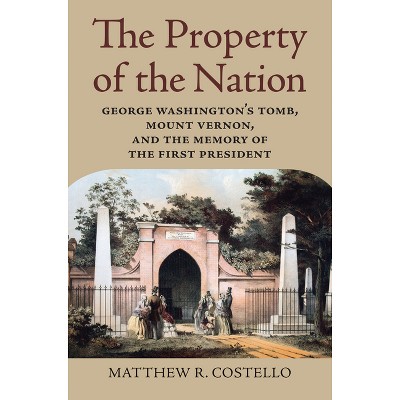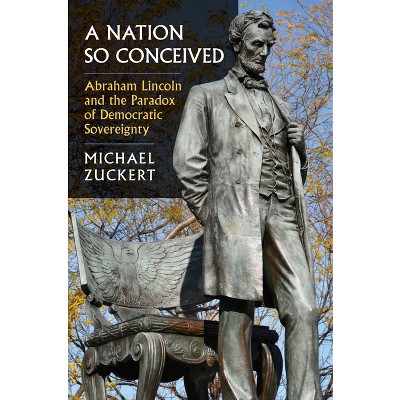About this item
Highlights
- It is the largest landholder in America, overseeing nearly an eighth of the country: 258 million acres located almost exclusively west of the Mississippi River, with even twice as much below the surface.
- Author(s): James R Skillen
- 314 Pages
- Political Science, Public Policy
Description
About the Book
This is the first comprehensive history of the Bureau of Land Management, the federal agency that manages a vast assortment of nameless lands in the American West. Details the agency's history of limited political power and chronically uncertain mission.Book Synopsis
It is the largest landholder in America, overseeing nearly an eighth of the country: 258 million acres located almost exclusively west of the Mississippi River, with even twice as much below the surface. Its domain embraces wildlife and wilderness, timber, range, and minerals, and for over 60 years, the Bureau of Land Management has been an agency in search of a mission. This is the first comprehensive, analytical history of the BLM and its struggle to find direction. James Skillen traces the bureau's course over three periods-its formation in 1946 and early focus on livestock and mines, its 1970s role as mediator between commerce and conservation, and its experience of political gridlock since 1981 when it faced a powerful anti-environmental backlash. Focusing on events that have shaped the BLM's overall mission, organization, and culture, he takes up issues ranging from the National Environmental Policy Act to the Sagebrush Rebellion in order to paint a broad picture of the agency's changing role in the American West. Focusing on the vast array of lands and resources that the BLM manages, he explores the complex and at times contradictory ways that Americans have valued nature. Skillen shows that, although there have been fleeting moments of consensus over the purpose of national forests and parks, there has never been any such consensus over the federal purpose of the public lands overseen by the BLM. Highlighting the perennial ambiguities shadowing the BLM's domain and mission, Skillen exposes the confusion sown by conflicting congressional statutes, conflicting political agendas, and the perennial absence of public support. He also shows that, while there is room for improvement in federal land management, the criteria by which that improvement is measured change significantly over time. In the face of such ambiguity--political, social, and economic--Skillen argues that the agency's history of limited political power and uncertain mission has, ironically, better prepared it to cope with the more chaotic climate of federal land management in the twenty-first century. Indeed, operating in an increasingly crowded physical and political landscape, it seems clear that the BLM's mission will continue to be marked by ambiguity. For historians, students, public administrators, or anyone who cares about American lands, Skillen offers a cautionary tale for those still searching for a final solution to federal land and resource conflicts.Review Quotes
"An insightful, comprehensive history of this somewhat unknown agency, one that oversees more land than the National Park Service, U.S. Forest Service, or U.S. Fish and Wildlife Service. . . . A masterful critique and historical summary."--American Historical Review
"A comprehensive, fair-minded, up-to-date history of the Bureau of Land Management that reveals significant trends in its history."--Agricultural History
"Skillen deftly depicts the historical dimensions of the bureau's contemporary dilemmas and is particularly good at showing how inner turmoil and external pressure played to and off one another over time."--Western Historical Quarterly
"A much-needed account of the most complex public land management agency in the West."--Western American Literature
"A major and illuminating study contribution to understanding the multiple options available in public lands management and how the decision-making process can be swayed by advocacy and special interests unless an informed general public becomes engaged."--Oregon Historical Quarterly
"The definitive source for future scholarship on the BLM. First-rate historical analysis, rich in detail and insights, and written in a voice that is both confident and accessible."--Journal of American History
"A comprehensive assessment of the Bureau of Land Management (BLM), its origins, evolution, and ongoing efforts to manage the public lands for an increasing array of resources. . . . An even-handed treatment of public lands administration."--Great Plains Research
"Anyone who cares about the legendary landscapes of the American West needs to understand the crucial role of the Bureau of Land Management (BLM). Once cast as the 'leftover' lands of the public domain, BLM lands now stand as the nation's most illuminating case study in the grand experiment of reconciling conservation goals with the practices of democracy, as the agency's 'multiple use' mandate requires its officials to engage in constant negotiation with a wildly diverse array of advocacy and interest groups. Skillen's clearly written and thoughtful book thus constitutes a major contribution to regional and national self-understanding. The more American citizens who read this book, the better our chances of having good sense and informed perspective guide decisions made about the public lands."--Patricia Nelson Limerick, author of The Legacy of Conquest
"An excellent overview by an insightful historian of the role of the Bureau of Land Management in public land history from its inception after World War II through the first decade of the 21st century. . . . Should be at the top of reading lists in seminars and classes devoted to public land policy."--William Rowley, author of The Bureau of Reclamation
"Skillen has done a marvelous job of keeping his biases in check. The result is a genuine history of--not a polemic against--the BLM. It fills a longstanding void in the literature and will be ideal for classes on natural resource policy or federal lands."--John Freemuth, author of Islands under Siege: National Parks and the Politics of External Threats
Shipping details
Return details
Trending Current Affairs & Politics












